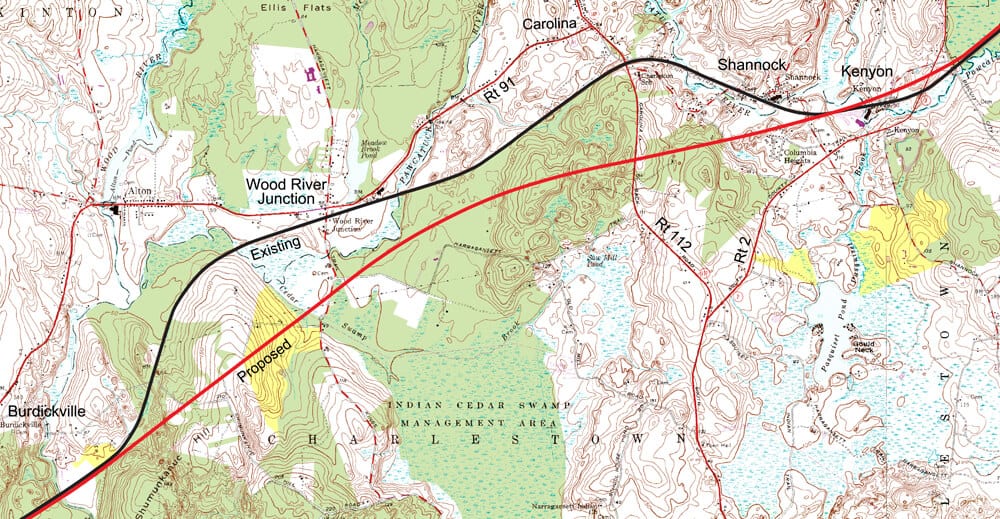In December 2016 I traveled from Rhode Island to Connecticut to a meeting at the Old Lyme Town Hall where one of Connecticut’s US Senators, Richard Blumenthal, promised to do everything in his power to stop the Federal Railroad Administration’s plan for the “Old Saybrook to Kenyon Bypass” including tying himself to the railroad tracks.
I loved the imagery of Senator Blumenthal tied to the tracks, not because I would ever want to see him hurt (I have great admiration for the senator), but because the image showed such uncompromising opposition.
On July 16’th the Connecticut Examiner reported that both of Connecticut’s senators support the just-announced Connect NEC 2035 that implements the first phase of the Federal Railroad Administration’s NEC Future plan. However, in Senator Blumenthal’s case, no mention was made of continued opposition to the Bypass. What was offered instead was a promise from Connecticut’s US Senator Chris Murphy to be “sensitive to existing communities that live by the rail.”
I write because my community of Charlestown, Rhode Island, contains the Kenyon end of the Bypass, and the Federal Railway Administration planned less than five years ago to bisect Charlestown with new high-speed tracks that would have run from Charlestown’s western edge to its eastern edge—through the Burlingame State Wildlife Management Area; through other state and private open space and homes in Burdickville village; across farms, including a four-generation farm-to-table operation on top of Schumankanuc Hill; over Native American tribal land; through the center of the 1,112-acre Carter Preserve (owned by The Nature Conservancy); through the middle of the Revolutionary-era Amos Green Farm and adjacent properties protected by conservation easements; through federally funded Historic Columbia Heights housing; and then over Historic Kenyon— to reconnect with the existing railroad near the eastern edge of town in the Great Swamp State Wildlife Management Area. In addition, the Bypass would have crossed the National Wild and Scenic Pawcatuck River several times and was entirely within the areas of the US Fish and Wildlife Great Thicket National Wildlife Refuge and the Wood-Pawcatuck Sole Source Aquifer.
The plan was defeated back then because there is simply no “sensitive” way to inflict this level of environmental and cultural destruction.
The New Haven to Providence Capacity Planning Study that is part of Connect NEC 2035 and meant to resolve the issues of the Bypass needs a lot more than sensitivity. Before anyone even considers the issues and possible solutions to providing high-speed rail between New Haven and Providence, there needs to be a true Environmental Impact Study (EIS) that includes all impacts, such as impact the Bypass would have had on nearly 1,800 acres of permanently protected open space, 450 acres of working farms, National Register–eligible villages, a National Wild and Scenic River, and the area of a National Wildlife Refuge. All of these, and more, were omitted from the Federal Railroad Administration’s Tier 1 EIS, and that is just in one small town along the Bypass.
I don’t expect Connecticut’s people and politicians to know or care about my Rhode Island town, but we are tied together along the proposed “Old Saybrook to Kenyon Bypass,” and weakened opposition anywhere along the proposed Bypass route impacts all of us. It would be very helpful if the people at the Connecticut end of the Bypass could remind Senator Blumenthal of his promise to tie himself to the tracks.
Ruth Platner
Chair, Charlestown, Rhode Island Planning Commission

